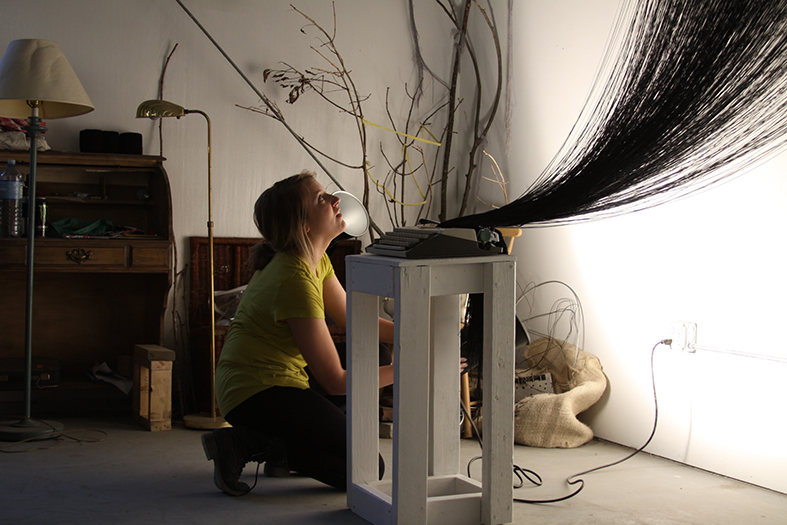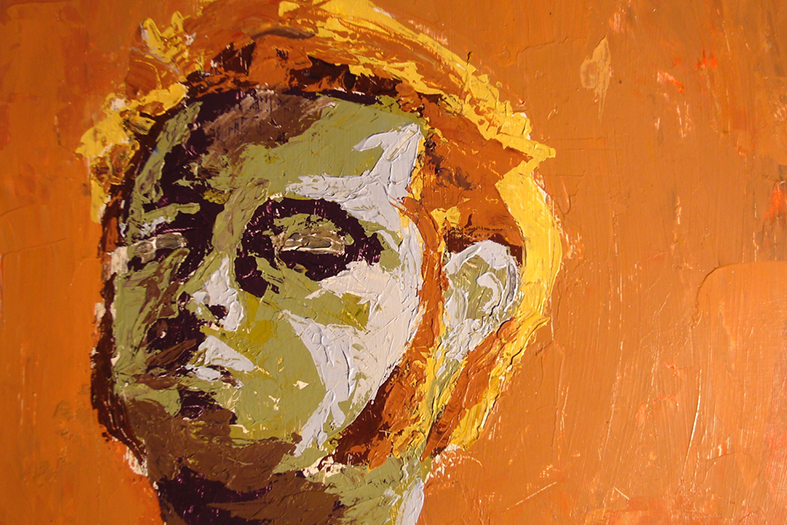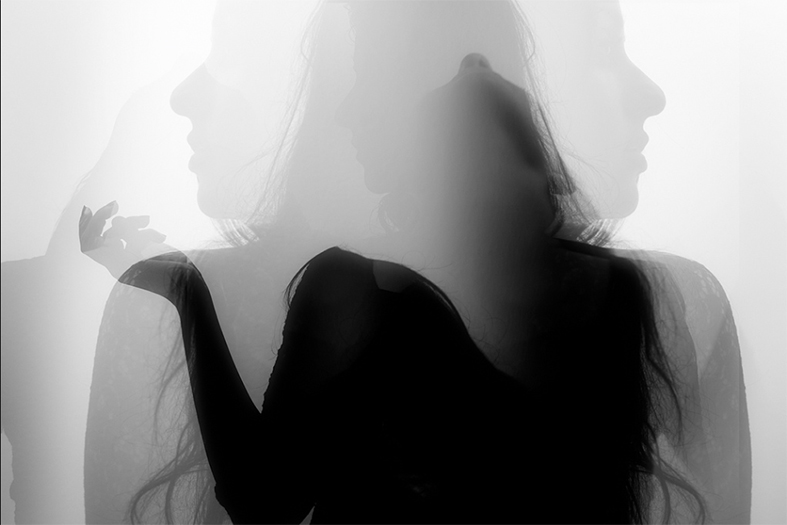Visual Arts
The Visual Arts department at Roger Williams University prepares students for future careers in the arts with an interdisciplinary spirit and a global perspective. The Visual Arts faculty consists of active artists who share their experience with students through lively and challenging discussions and critiques. Media exploration is encouraged throughout the program and culminates in the creation of a cohesive body of work that reflects the individual student’s interests.
The major brings together students of diverse backgrounds who explore their creative interests through a range of media experiences. Emphasis of study is placed on historical as well as contemporary theories in the arts so that students may better place their own artwork within a larger context. Students in the program balance craft and conceptual agility and new and traditional media to engage in an increasingly interdisciplinary world. The interdisciplinary nature of the program allows students to explore multiple areas of interest that informs their creative work and gives students a broader skill-set than most arts programs. Our strength is the amount of attention given to each individual student-artist as they develop in the program preparing them for a future career in the arts.

To fit our students educational and career goals, Roger Williams University offers two degree tracks for visual artists—the Bachelor of Arts or the Bachelor of Fine Arts. The BA allows room for double majors or minors to explore a range of courses in the Visual Arts program. The BFA allows students to develop media concentrations in our areas of concentration.
Visual Arts Department Mission
The Visual Arts Department prepares students to express effectively through visual communication, ideas, opinions, and impressions about personal, societal and aesthetic aspects of the lived experience. Diversity, equity and social justice are central to our program which honors all individuals' identities, cultures and communities. Interdisciplinary exploration within and outside the Visual Arts is critical to the art-making process and is an essential aspect of the program. An education in the Arts develops creativity and problem-solving abilities and is a powerful preparation for all professional careers. Study in Visual Arts culminates in the creation of a developed body of work that reflects the expression of each individual student’s personal areas of interest.
Statement on Learning Outcomes
Visual Arts at Roger Williams University offers an approach to art making that is interdisciplinary by design while focused on the diverse interests of our individual students. Working in traditional and contemporary media, students take ownership of their personal vision and creative process to visually communicate their ideas, observations and reflections of the complex world that surrounds us.
At the completion of their study in the Visual Arts program, students will be able to:
- Demonstrate a proficiency in the formal aspects, materials and media of art-making.
- Effectively engage with conceptual or narrative ideas in their artwork.
- Analyze and communicate the meaning of an artwork in writing and speaking.
- Situate their artwork within a larger historical, cultural and contemporary context.
Degree Requirements
To read more about our academic offerings, or to view full course descriptions, please refer to our University Catalog.
Visual Arts Concentrations
- Film, Animation and Video
- Painting, Drawing and Printmaking
- Photography and Digital Media
- Sculpture & Ceramics
BFA candidates in Visual Arts have the option to develop an area of concentration within the Professional Degree in one of the above, four media areas based upon their individual interests. Students minoring in Visual Arts, also pursue one of these four concentration areas. A sequence of courses in a medium insures some level of proficiency in that medium beyond the introductory level.

Distinctive Features of the Visual Arts Program
- A dynamic student and faculty community with diverse interests.
- Visiting Artists who deliver lectures, have exhibitions on campus and work directly with VARTS students each semester.
- Semi-private studio space both on and off campus.
- Internship program in partnership with the RWU Center for Career & Professional Development.
- Frequent trips to Museums and Galleries in Providence, New York, Boston and beyond.
- Study abroad in Florence, Italy as well as other global venues.
Student Work
The Visual Arts program at Roger Williams University is interdisciplinary by design. Students are expected to explore a range of media from painting and ceramics to photography and video. Through the experiences of different media, students are challenged to find their own voice as an artist in work that reflects their individual aims and interests. Our students develop proficiencies in several media, often combining media in new and unexpected hybrids. Students in VARTS at RWU routinely make high-quality work that we are proud to display throughout the campus community in our Art on Campus program
Film, Animation and Video
Students in Film, Animation and Video courses are empowered to develop their individual voices and ambitiously pursue their interests with this time-based medium. Using a wide variety of the tools of animation and video production, from 3D modeling to experimental video, students build narratives in order to connect with their audience. Students create dynamic media exhibitions every semester and manage the RWU Student Film Festival.
Painting, Drawing and Printmaking

Photography and Digital Media

Sculpture & Ceramics


Visual Arts Department Alumni Spotlight
Kristen Fissell, RWU Class of 2022Kristen completed many installations and exhibitions during her year with the Visual Arts program, most of her work being displayed at the then Roger That! Gallery. She notes that her favorite class taken during her time with the Visual Arts program was Marking Spaces with Professor Elizabeth Duffy. In this advanced sculpture class, Kristen said she learned how to take up space in a bigger and more impactful way.
Read full storyArts on Campus Installations
Arts on Campus is a university-wide program to showcase the work of our students, faculty, and partner artists. With over 20 art and design installation sites university-wide, Arts on Campus highlights the power art has to enthrall and stimulate dialogue throughout the RWU community.
Our Alumni Are
- Gallery assistants and administrators
- Teaching in Arts Education in public schools, private schools, and workshops
- Art directors or writers at magazines
- Design consultants
- Pursuing graduate degrees
- Working freelance as photographers or own their own businesses as designers
A statement on Diversity, Equity, and Inclusion
The Visual Arts Department prepares students to express effectively through visual communication, ideas, opinions, and impressions about personal, societal, and aesthetic aspects of the lived experience. Interdisciplinary exploration within and outside the Visual Arts is critical to the art-making process and is an essential aspect of the program. An education in the Arts develops creativity and problem-solving abilities and is a powerful preparation for all professional careers. Study in Visual Arts culminates in the creation of a developed body of work that reflects the expression of each individual’s areas of interest. Diversity, equity, and social justice are central to our program, one that honors all individuals' identities, cultures and communities.










